The recycled paper market is expected to grow from US$ 32,558.44 million in 2021 to US$ 42,395.79 million by 2028; it is estimated to grow at a CAGR of 3.8% from 2021 to 2028.
There is a significant increase in demand for recycled paper due to the growing initiatives of governments of various nations to encourage waste paper recycling. The recycled paper is limited to the paper used in industrial applications, but it also includes household waste paper such as newspapers, magazines, and packaging papers. The generation of paper waste from these sources is very high, and this waste needs to be recycled rather than dumping it over or burning it. With the implementation of government regulations and the formation of new associations related to recycled paper, the market for recycled paper is estimated to expand rapidly in the coming years.
The recycled paper market in Asia Pacific is expected to grow at the highest CAGR during the forecast period. Many Asia Pacific countries, including Australia, China, India, and Japan, have many manufacturing industries such as steel, mining and metallurgy, petrochemicals, oil & gas, food & beverages, and textile. With rapid economic growth and urbanization, waste generation and management are becoming major social and environmental issues in Asia. Every country in Asia has specific measures of solid waste management and material-cycle policy. A landfill is the most common disposal option adopted in many Asian countries since it is inexpensive. Many countries in this region have recently introduced laws on municipal solid waste (MSW). According to the World Bank, the urban areas in APAC produce ~760,000 tons of MSW per day, and this figure is estimated to increase to 1.8 million tons by 2025. The potential demand for the products such as white & all colored paper, cardboard, newspaper, magazines & brochures, shredded paper, and printed documents from various industries in Asia Pacific is increasing. Thus, it is accelerating the need for recycled paper in Asia Pacific, boosting the market growth.
Customize This Report To Suit Your Requirement
You will get customization on any report - free of charge - including parts of this report, or country-level analysis, Excel Data pack, as well as avail great offers and discounts for start-ups & universities
Recycled Paper Market: Strategic Insights

- Get Top Key Market Trends of this report.This FREE sample will include data analysis, ranging from market trends to estimates and forecasts.
You will get customization on any report - free of charge - including parts of this report, or country-level analysis, Excel Data pack, as well as avail great offers and discounts for start-ups & universities
Recycled Paper Market: Strategic Insights

- Get Top Key Market Trends of this report.This FREE sample will include data analysis, ranging from market trends to estimates and forecasts.
Impact of COVID-19 Pandemic on Recycled Paper Market
The COVID-19 pandemic had drastically altered the status of the chemical & materials sector and negatively impacted the growth of the recycled paper market. The implementation of measures to combat the spread of the virus had aggravated the situation and impacted the growth of several industrial sectors. The sudden distortion had impacted industries such as automotive and packaging in operational efficiencies and disruptions in the value chains attributable to the sudden closure of national and international boundaries. The significant decline in the growth of several industrial sectors significantly impacted the demand for recycled paper in the global market. Due to the COVID-19 pandemic, the market has had a negative impact on its production due to factory shutdowns across the globe. This pandemic is projected to impact the recycled paper market at a moderate level, and the market is anticipated to recover in the next two to three quarters.
Market Insights
Stringent Governmental Regulations for Waste Management
The increasing awareness regarding the environmental impact of the accumulation of waste and failure to manage it have been among the major reasons driving various governments worldwide to enforce regulations associated to waste management. The paper recycling industry has been expanding across many countries such as the US, Canada, India, China, Japan, and Germany. The governments of various nations are implementing regulations to encourage the recycling of waste paper. Numerous associations such as The American Forest & Paper Association (AF&PA), Independent Waste Paper Processors Association (IWPPA), The Confederation of Paper Industries (CPI), and European Recovered Paper Association (ERPA) encourage the practice of recycling paper. Such associations are supporting the growth of the recycled paper market.
Type Insights
Based on type, the recycled paper market is segmented into pre-consumer waste and post-consumer waste. The pre-consumer waste segment accounted for a larger market share in 2020, and it is expected to grow faster during the forecast period. Pre-consumer recycling is the reclamation of waste materials created during the manufacturing or distribution of products before delivery to a consumer. Pre-consumer recycled materials can be broken down and remanufactured into similar or different materials. In the case of paper, pre-consumer waste refers to the scraps and trimmings that were cut off and discarded during the cutting process. Thus, the pre-consumer waste segment is anticipated to hold a potential growth opportunity in the coming years.
Application Insights
Based on application, the recycled paper market is segmented into writing and printing paper, containerboard, newsprint paper, tissue, and others. The containerboard segment is anticipated to grow due to the highest production, with more than 100 million tons produced each year. The growth of the printing and writing paper segment is attributed to wide applications across offices, homes, schools, and government agencies. The newsprint paper segment is also expected to increase its market share due to its application in printing newspapers and other publications.
The key players operating in the recycled paper market include Cascades Recovery+; Global Waste Recyclers Ltd; Hanna Paper; Heinzel Holding GmbH; Republic Services, Inc.; International Paper; Perlen Papier; Sonoco Products Company; ST PAPER RESOURCES PTE LTD; and WASCO. The key companies adopt strategies such as mergers and acquisitions and research and development to expand their customer base and gain significant share in the global market, allowing them to maintain their brand name globally.
Recycled Paper Market Regional Insights
The regional trends and factors influencing the Recycled Paper Market throughout the forecast period have been thoroughly explained by the analysts at Insight Partners. This section also discusses Recycled Paper Market segments and geography across North America, Europe, Asia Pacific, Middle East and Africa, and South and Central America.
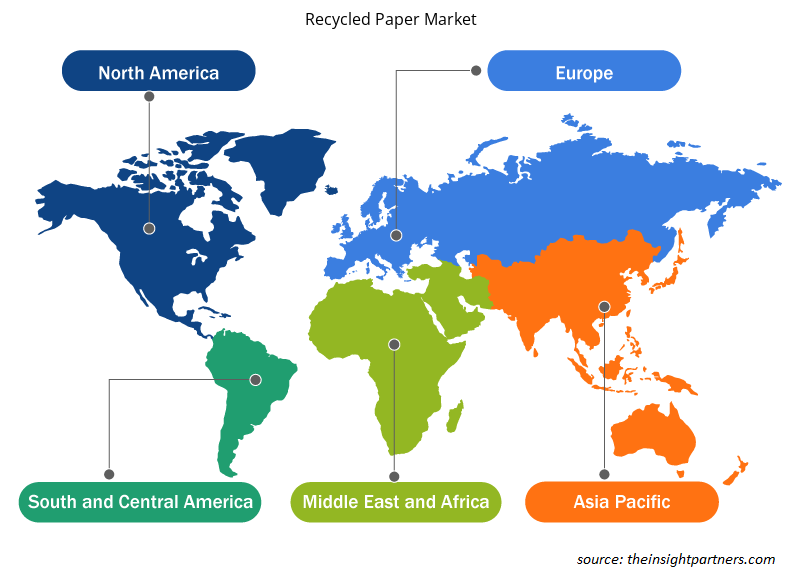
- Get the Regional Specific Data for Recycled Paper Market
Recycled Paper Market Report Scope
| Report Attribute | Details |
|---|---|
| Market size in 2021 | US$ 32.56 Billion |
| Market Size by 2028 | US$ 42.4 Billion |
| Global CAGR (2021 - 2028) | 3.8% |
| Historical Data | 2019-2020 |
| Forecast period | 2022-2028 |
| Segments Covered |
By Type
|
| Regions and Countries Covered | North America
|
| Market leaders and key company profiles |
Recycled Paper Market Players Density: Understanding Its Impact on Business Dynamics
The Recycled Paper Market is growing rapidly, driven by increasing end-user demand due to factors such as evolving consumer preferences, technological advancements, and greater awareness of the product's benefits. As demand rises, businesses are expanding their offerings, innovating to meet consumer needs, and capitalizing on emerging trends, which further fuels market growth.
Market players density refers to the distribution of firms or companies operating within a particular market or industry. It indicates how many competitors (market players) are present in a given market space relative to its size or total market value.
Major Companies operating in the Recycled Paper Market are:
- Cascades Recovery+
- Global Waste Recyclers Ltd
- Hanna Paper
- Heinzel Holding GmbH
- Republic Services, Inc.
Disclaimer: The companies listed above are not ranked in any particular order.
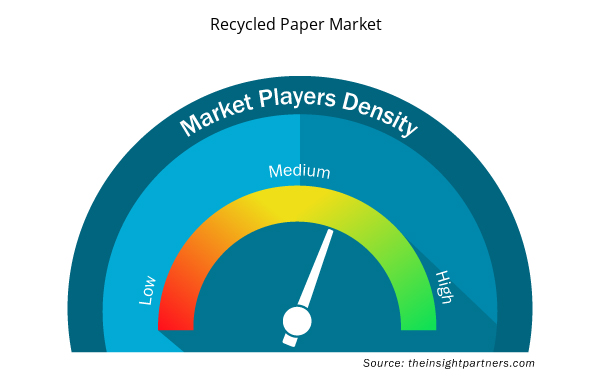
- Get the Recycled Paper Market top key players overview
Report Spotlights
- Progressive industry trends in the recycled paper market to help players develop effective long-term strategies
- Business growth strategies adopted by developed and developing markets
- Quantitative analysis of the recycled paper market from 2018 to 2028
- Estimation of global demand for recycled paper
- PEST analysis to illustrate the efficacy of buyers and suppliers operating in the industry
- Recent developments to understand the competitive market scenario
- Market trends and outlook as well as factors driving and restraining the growth of the recycled paper market
- Assistance in the decision-making process by highlighting market strategies that underpin commercial interest, leading to the market growth
- The size of the recycled paper market size at various nodes
- Detailed overview and segmentation of the market, as well as the recycled paper industry dynamics
- Size of the recycled paper market in various regions with promising growth opportunities
Recycled Paper Market – by Type
- Pre-Consumer Waste
- Post-Consumer Waste
Recycled Paper Market – by Application
- Printing Paper
- Containerboard
- Newsprint Paper
- Tissue
- Others
Company Profiles
- Cascades Recovery+
- Global Waste Recyclers Ltd.
- Hanna Paper
- Heinzel Holding GmbH
- Republic Services, Inc.
- International Paper
- Perlen Papier
- Sonoco Products Company
- ST PAPER RESOURCES PTE LTD
- WASCO
- Historical Analysis (2 Years), Base Year, Forecast (7 Years) with CAGR
- PEST and SWOT Analysis
- Market Size Value / Volume - Global, Regional, Country
- Industry and Competitive Landscape
- Excel Dataset
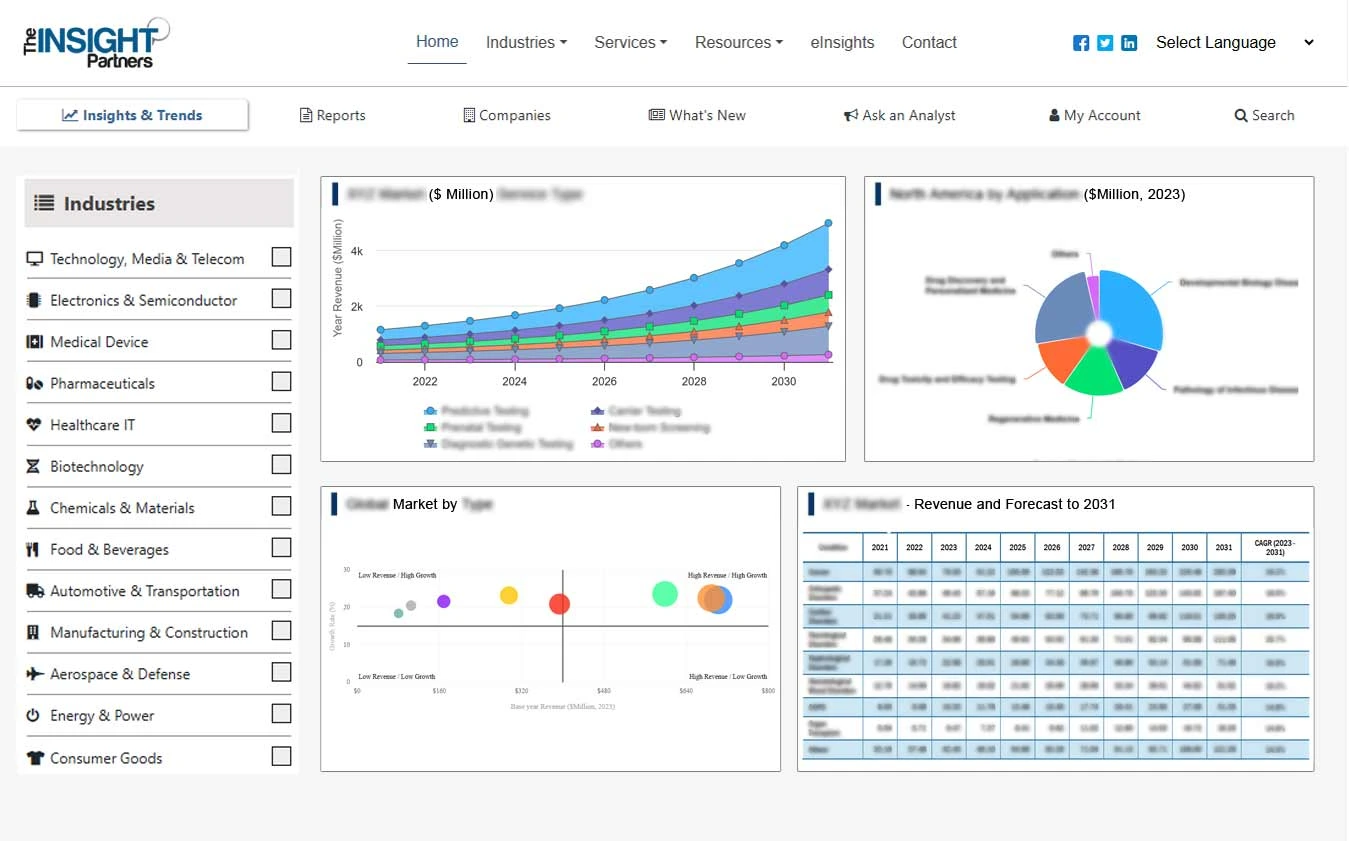
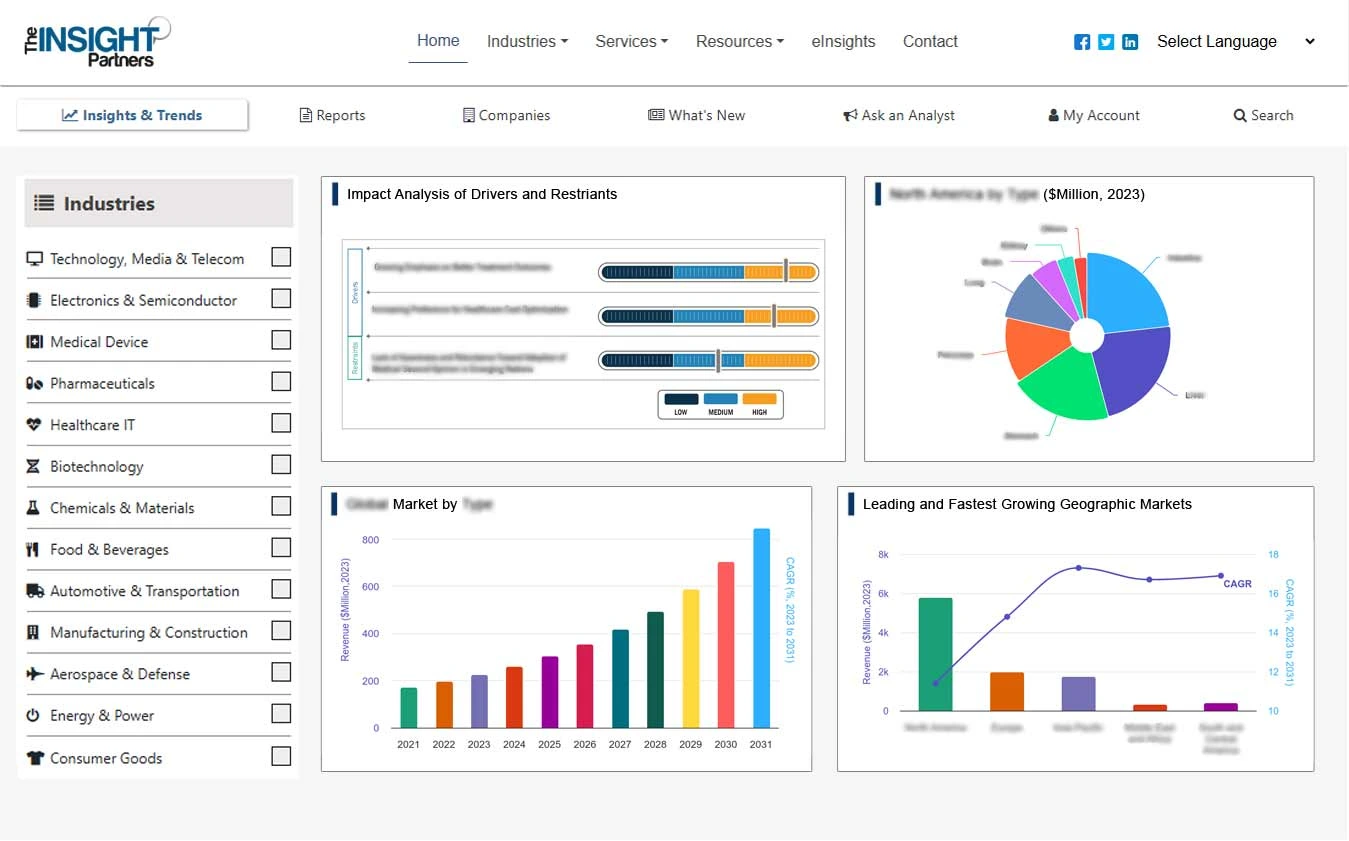

Report Coverage
Revenue forecast, Company Analysis, Industry landscape, Growth factors, and Trends

Segment Covered
Type, and Application

Regional Scope
North America, Europe, Asia Pacific, Middle East & Africa, South & Central America

Country Scope
Argentina, Australia, Brazil, Canada, China, France, Germany, India, Italy, Japan, Mexico, Russian Federation, Saudi Arabia, South Africa, South Korea, United Arab Emirates, United Kingdom, United States
Frequently Asked Questions
What is the forecast outlook of newspaper segment in the recycled paper market?
Newspaper industry is a major consumer of recycled paper as it does not require the highest quality of paper. The process of recycling impacts the fibers of paper, which is not considered to be a drawback for newspapers unlike for other forms of paper such as writing and printing paper. However, the growth of the internet and digital platforms have had an impact on the newspaper industry and has witness a decline in the recent years. Smartphones and tablets have made news and information available to the public at their personal convenience, thereby hampering the demand for newspaper.
What is the scope of recycled paper in the global market?
Recycled paper refers to the paper obtained through the recycling of virgin paper that is either used by the consumer or obtained from the waste before it is utilized for any application.
Based, on type, the recycled paper market is segmented into pre-consumer waste and post-consumer waste. Based on application, the recycled paper market is segmented into writing and printing paper, containerboard, newsprint paper, tissue, and others.
Can you list some of the major players operating in the Global Recycled Paper Market?
The major players operating in the global recycled paper market are Cascades Recovery+; Global Waste Recyclers Ltd; Hanna Paper; Heinzel Holding GmbH, Inc.; International Paper; Perlen Papier AG; Republic Services, Inc.; Sonoco Products Company; ST Paper Resources Pte Ltd; American Chung Nam; Waste Management; and WASCO among many others.
Based on application, what was the largest segment of the global recycled paper market?
Containerboard segment accounted for the largest share of the recycled paper market in 2020. Containerboard utilizes a significant amount of recycled paper during production and accounts for a tremendous share of the global paper demand. Moreover, increasing penetration of e-commerce and international trade has further propelled the demand for containerboards.
What was the largest geographic region for the global recycled paper market in 2020?
Asia Pacific region accounted for a significant share of the global recycled paper market in 2020. The market is projected to witness remarkable growth in the near future due to the rapidly expanding population and the growth of the e-commerce sector in countries such as China and India. These two economies are growing at rapid pace and accounts for a large share of the global population.
Based on type, what is the prospect of the post-consumer waste segment?
Post-consumer waste is defined as material that has served its initial purpose as a consumer item and has been separated from other material that needs to be disposed of. Post-consumer waste can now be recycled and used after it has completed its life cycle as a consumer item. In the case of paper, post-consumer waste would be that which was printed. Increasing awareness among the global population is expected to aid the growth of the post-consumer waste segment.
Trends and growth analysis reports related to Chemicals and Materials : READ MORE..
The List of Companies - Recycled Paper Market
- Cascades Recovery+
- Global Waste Recyclers Ltd
- Hanna Paper
- Heinzel Holding GmbH
- Republic Services, Inc.
- International Paper
- Perlen Papier AG
- Sonoco Products Company
- ST PAPER RESOURCES PTE LTD
- WASCO
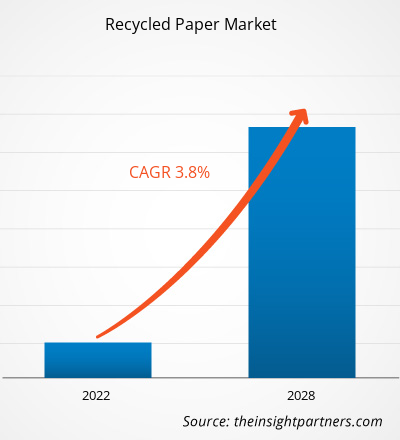
 Get Free Sample For
Get Free Sample For